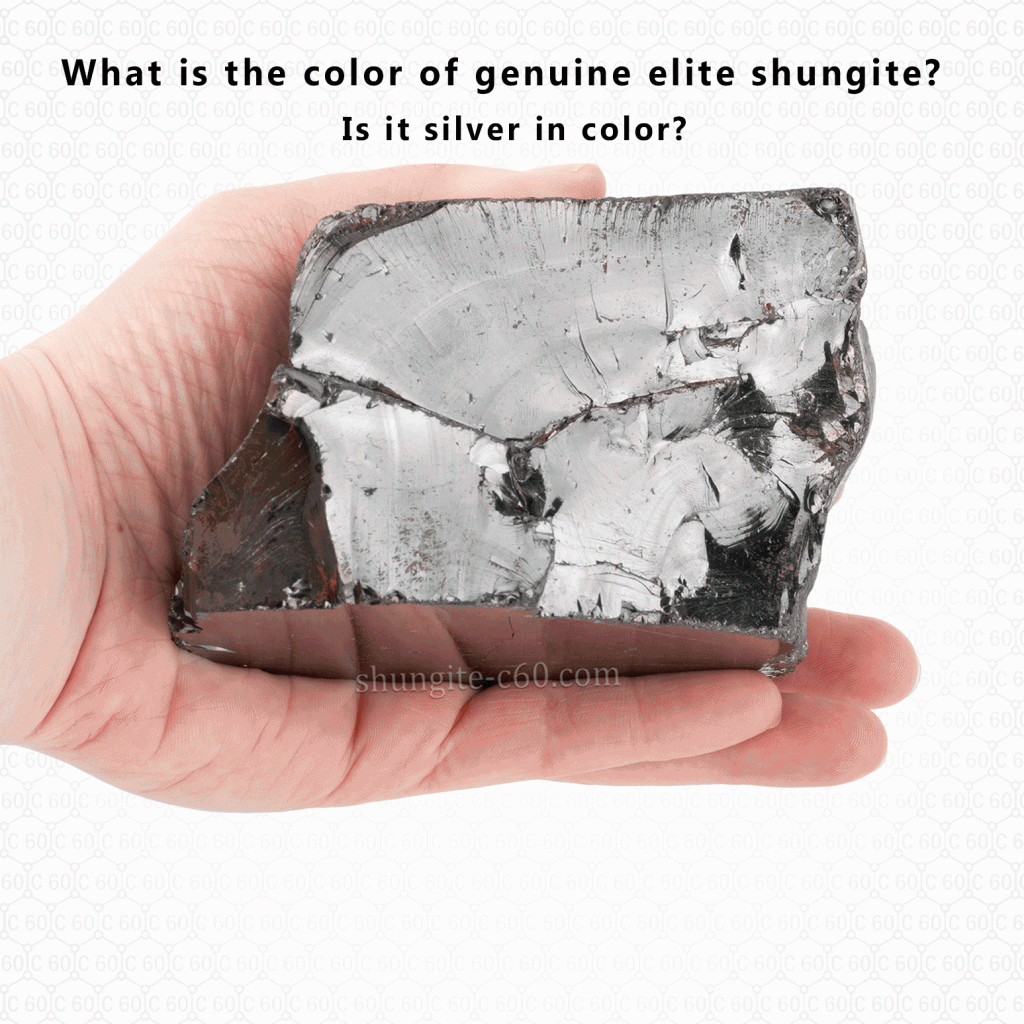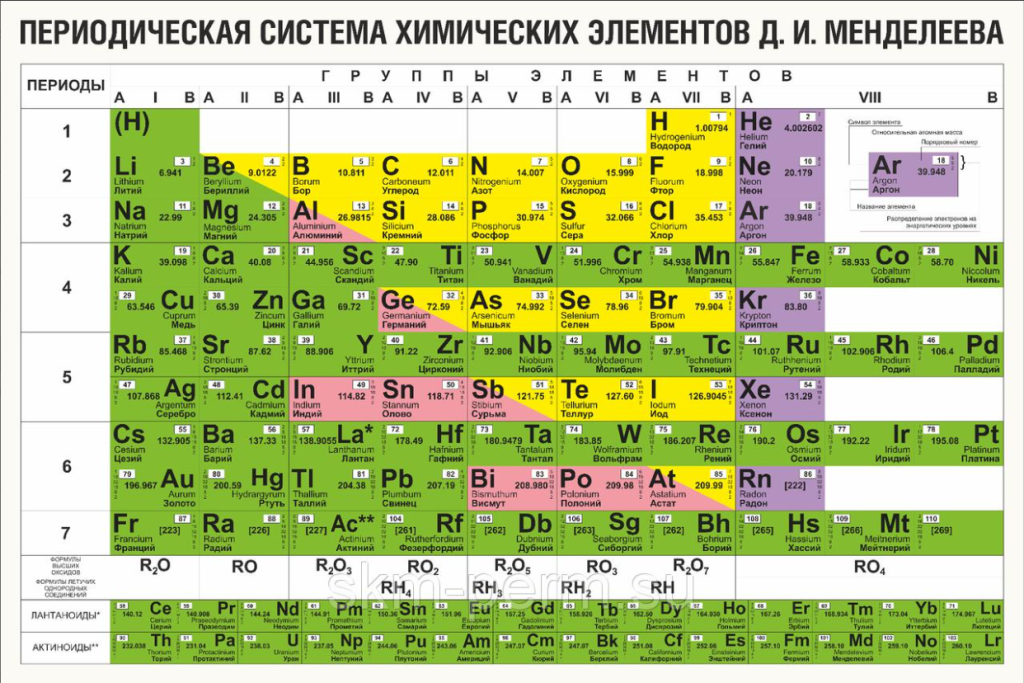The Titanium Aura Quartz: about color and vibrations
Why does the aura of quartz shine and can it vibrate?
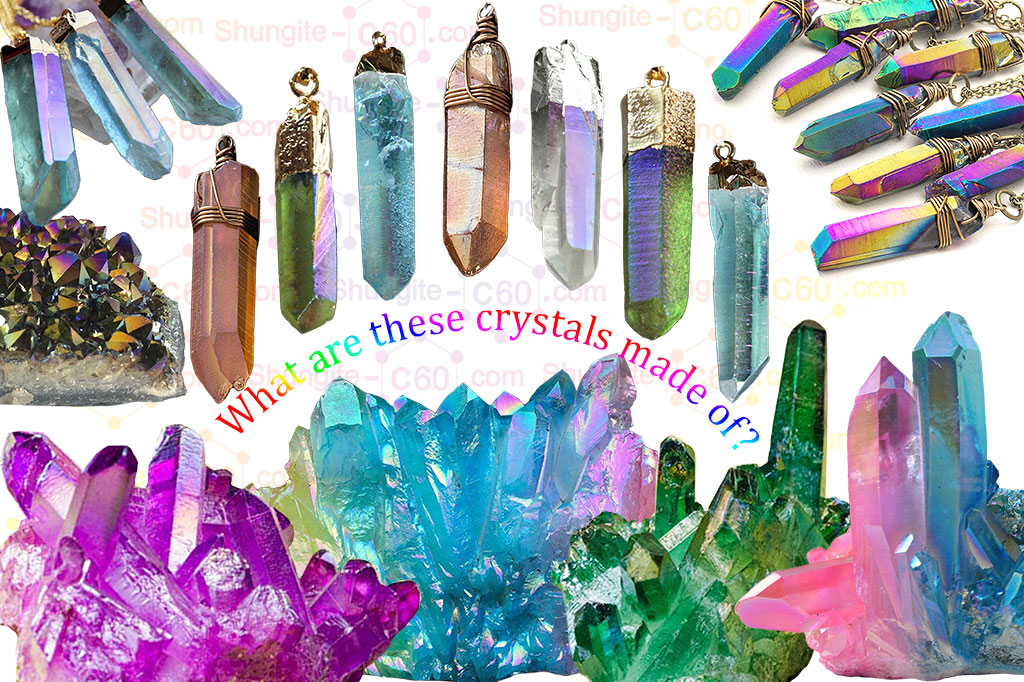
Quartz is a common mineral that is an essential component in the composition of many rocks. It is also a constant companion of the mineral shungite in the form of white inclusions. In this article, we will tell you in great detail where titanium aura quartz comes from. Can such a beautiful crystal vibrate. And also we will describe in simple words how does quartz crystal vibrate – read this at the end of the article.
However, quartz in nature can have other colors, such as purple (amethyst) or pink (rose quartz), yellow (citrine). The color of natural quartz depends on the presence of impurities in it of chemical elements (manganese-rose quartz, iron – quartz Morion and so on). These chemical impurities can make them the rarest minerals on earth.
But man decided to go beyond nature and create an even more amazing colored quartz on his own. Thus, appeared flame aura quartz or titanium quartz.
To get such bright colors on the surface of quartz crystals or natural quartz Druse make spraying a very thin film of metal titanium, niobium or aluminum.
This method of ennobling ordinary quartz by vacuum deposition of metal vapors was relatively recently developed and patented in the United States in 2006 on February 14, patent No. 6997014.
The crystal of transparent quartz is placed in a vacuum chamber with a pressure of two atmospheres, where the crystal is heated to a temperature of 871 °C (in vacuum), then titanium vapors are released into the chamber, which are deposited (condensed) from the gas phase on the surface of the crystal, giving it a blue color. This process is called “deposition from the gas phase”.
What color titanium coating?

In General, titanium and some of its compounds are characterized by various bright and beautiful colors. For example, titanium nitride coating has a color very similar to the color of gold and is often used as a decorative coating (for example, the domes of modern churches are covered with TiN).

In addition, the coating of titanium nitride has a high wear resistance and heat resistance, which has found its application in industry. In General, various methods of spraying different materials to create coatings of the desired properties are very common in the industry. So, it is not only beautiful, but also useful. In this case the color of Titanium Aura Quartz shines like gold.

The color Titanium Aura Quartz itself is formed by the interference of light in the metal coating film and is caused by a change in its thickness. The effect is called interference staining in thin films. Light waves are reflected from the lower and upper surface of the oxide film and they overlap each other. This is what we see on puddles of gasoline and soap bubbles.
The coating metal film is titanium or titanium dioxide

It is titanium, but the oxide coating is still there, even on the surface of the deposited titanium. After all, the color changes precisely because of the oxide films, depending on its thickness: from yellowish to purple (in extreme cases to black). This can be seen in the phenomenon of metal oxidation. It is the process of oxidation of the surface of solid metals and semiconductor materials by chemical, electrochemical (anodizing) or other means. For example, thin titanium oxide film of different colors can be applied by anodizing (electrolysis).
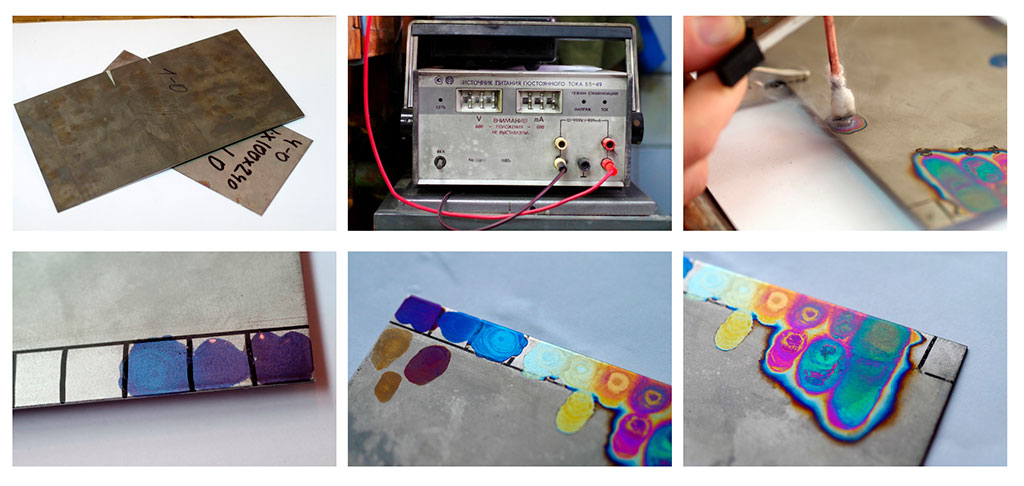
The metal in the photo is light – colored-it is pure titanium with a natural oxide film (thickness about 5-7 nanometers), which can be neglected. The yellows and Reds belong to the thin titanium oxide film coating, and the Blues to the thicker oxide film.
Is titanium dioxide dangerous?
Over the past 10 years, the world community has been debating about the dangers of titanium dioxide in the form of the popular white food supplement E171 in toothpaste and food products. In many countries, including the United States, titanium dioxide is not considered toxic. But, for example, France will become the first state to ban titanium dioxide in the food industry at the legislative level since 2020.
The fact is that titanium oxide particles are considered inert (non-toxic), since they do not interact with irritants at the chemical level. But its nanoparticles, that is, very small particles can penetrate the cellular structure of the body. They can accumulate in the liver, lungs, intestines and brain and produce physical effects from the inside. Being in them, it provokes an active oxidative process, thereby causing an inflammatory reaction and becoming the cause, for example, of irritable bowel syndrome and other diseases, including chronic ones.
In an aesthetic sense, crystals covered with metal nanofilm look very impressive. However, as for titanium aura quartz jewelry, it is quite reasonable questions of consumers, and how safe can be for the skin and body metal spraying of titanium oxide, aluminum and other unknown compounds.
How else do color aura quartz
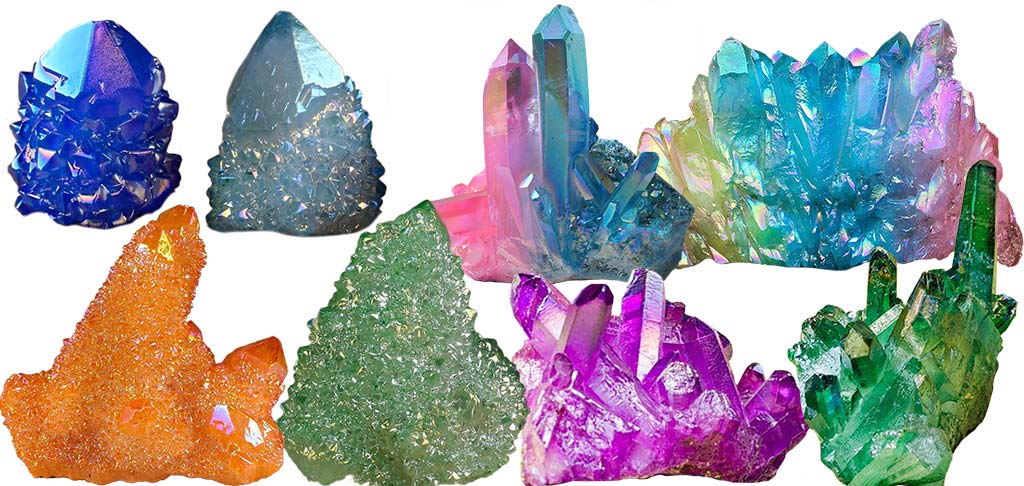
After 2006, the industry did not stand still, and the technology of making beautiful colored quartz crystals was improved and cheaper. After all, the film-spraying of the stone is quite thin, and it is subject to external mechanical influences and over time can be erased completely. Then instead of a colored crystal there will be an ordinary colorless stone. This defect was corrected with the help of a stove, glass and dyes.
This method of manufacturing crystals originally from China, has a low cost and is therefore very popular. To do this, take the cheapest colorless natural quartz. The price is 2-4 dollars per 1 kg. next, quartz is thoroughly cleaned, then the surface is tinted by deposition of thin metal or oxide films in old furnace plants to produce integrated circuits and other solid-state electronics.
After this stage of treatment, the tinted stone is placed in a hydrothermal SiO2 solution and a thin quartz film is grown on top of the metal one. Thus, colored quartz is obtained, which is covered with a thin artificial quartz film on top. Thus, the metal film does not wear over time.
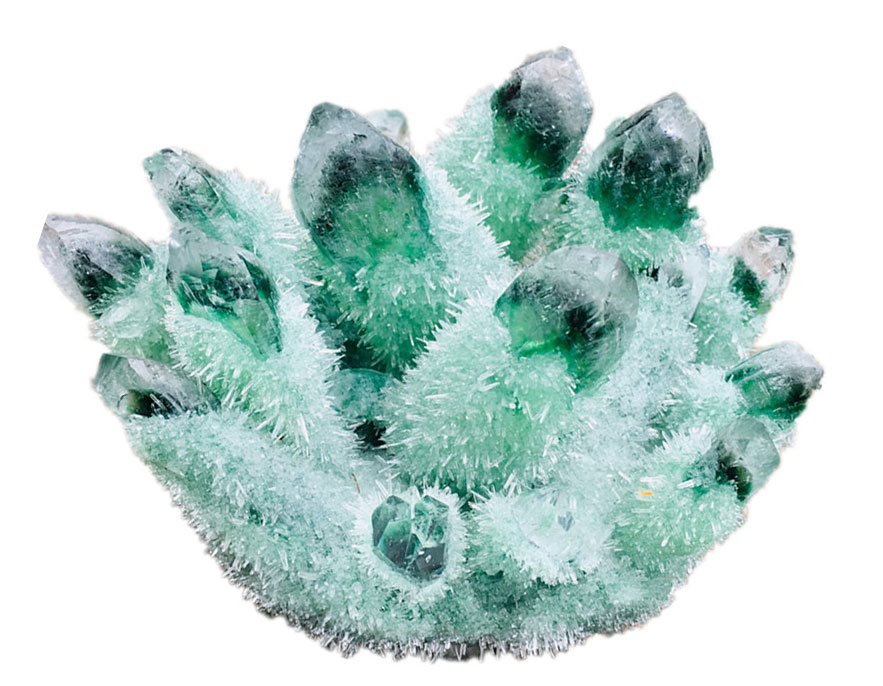
But this quartz Druse was coated with tinted glass using the hydrothermal method. To do this, the quartz Druse is placed in a vapor deposition chamber or in a hydrothermal growth facility and anything is deposited on the quartz surface. Quartz minerals themselves are transported to China by tons from Brazil and Madagascar.
Fake titanium aura quartz necklace
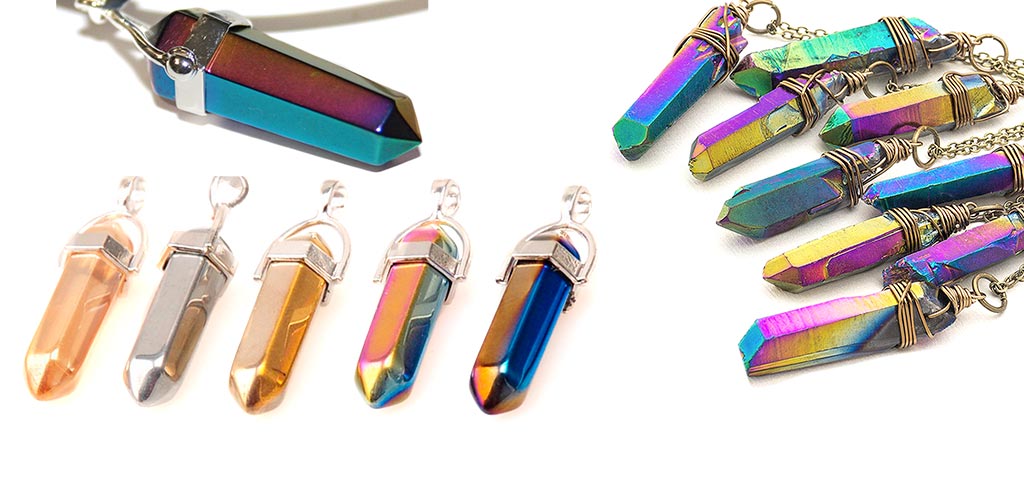
Even though the mineral quartz is quite common in nature, it can also be forged. Usually, instead of natural quartz, imitations of glass, plastic, epoxy resins, and their various mixtures are used. The top photo on the left shows an imitation, and on the right natural titanium aura quartz with rainbow coating. In fact, there are a lot of glass-ceramic and glass imitations of natural stones on the market.
In nature, there is a wide variety of quartz crystals in color and shape. A typical form in terms of morphology for quartz is a prism-hexagon, having one or both ends depending on the type of triangular or hexagonal head in the form of a pyramid. Often the crystal structure becomes thinner in the direction of the head.
But what real quartz looks like, which is usually used to make aura quartz, you can see in the photo below. Please note that some faces of the prism of a natural quartz crystal have transverse strokes; imitations do not have such signs.
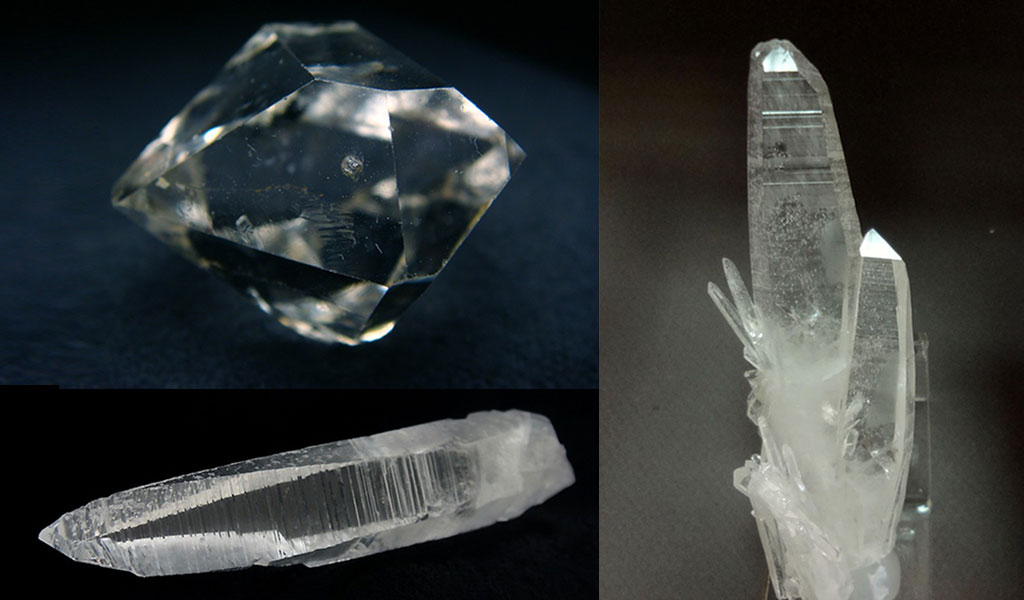
How to spot fake crystal aura quartz
Signs Fake Quartz Crystal Glass or Plastic:
- The presence of small bubbles in the product;
- Low hardness – glass or plastic can be scratched with a needle, knife or quartz crystal (for example, you can take amethyst druse);
- Smooth edges, as well as smoothly curving edges at the hole in the beads, can indicate that the product was melted from glass or plastic;
- Numerous scratches on the product can indicate low hardness of the materials, since quartz is very difficult to scratch;
- The uniform color of the product may indicate a synthetic stone or imitation of glass or plastic.
Quartz properties

An interesting property of a quartz crystal is that it can electrify and vibrate. It is these crystal vibrations that are usually associated with quartz helpful properties. We will detail how does quartz crystal vibrate.
Under the influence of mechanical stresses, electric charges arise in real quartz – this is a property of piezoelectricity. Moreover, one end of the crystal trapezohedron is electrified by a negative charge, and the opposite end is positive charge.
Also, crystals can vibrate when an alternating electric field is applied, and the vibration is characterized by a constant frequency depending on the size of the crystal. This property of quartz was used in the creation of communications in the Second world war. Later, synthetic quartz crystals were used in the watch and electronics industries.
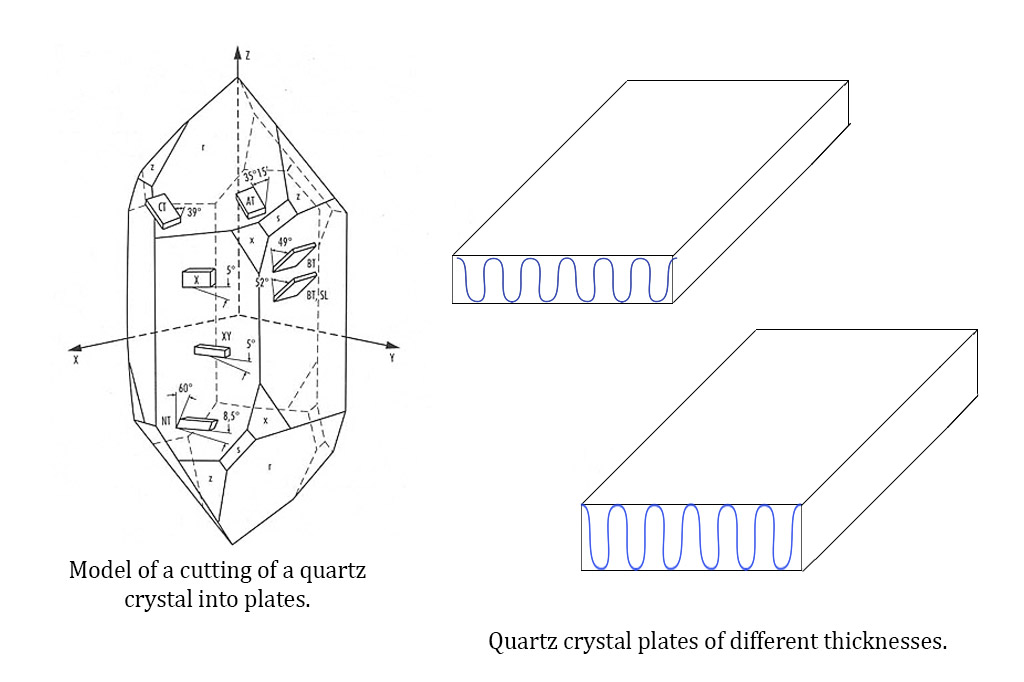
How does quartz crystal vibrate?
To obtain suitable samples that can vibrate it is necessary to cut the crystal in a special way. In this case, the greater thickness of the crystal plate creates higher vibrations of quartz, since the vibration waves are contained in the plane of the thickness of the crystal blank.
The ability of quartz to vibrate exists is not in all samples, but only in homogeneous and defect-free crystals (for example, good exemplars of rock crystal, smoky quartz, Morion). These should be crystals of at least 3.5 cm in size between the opposite sides of the prism. However, because natural quartz often has twins, chips and cracks, then to use the piezoelectric properties of the crystal in the industry exploit synthetic quartz without these defects.
Is there a vibration in the titanium aura quartz?
The ability of quartz crystals to vibration is because there are several types of quartz in nature, and they differ in crystal structure.

Alpha quartz, which is very common in nature. This is a low-temperature type of quartz, it is resistant to temperatures up to 573°C. alpha quartz in the crystal lattice has no center and plane of symmetry, due to which the mineral can exhibit pyroelectric and piezoelectric properties. That is, alpha quartz can vibrate.
Beta – quartz is a rare form of quartz, it is formed as a result of early discharge from the liquid magma. This is a high-temperature type of quartz, it can withstand temperature increases up to 870°C. Beta quartz in nature occurs in the form of dipyramids of small size up to two centimeters.
There, are also even more high-temperature types of quartz: gamma quartz tridymite and cristobalite.
The mineral quartz can change its crystal lattice when heated or under pressure. If alpha quartz is heated above 573°C, its crystal structure will change, and it will go into beta quartz. And beta quartz when cooled below 873°C will turn into alpha quartz.
As we previously pointed out, for the manufacture of aura quartz, it is heated to a temperature above 871 degrees Celsius (this must be done so that metal vapors can adhere to the surface of quartz). In this regard, the structure of the crystal changes, and it turns into beta quartz and therefore loses the ability to vibrate.
This applies to all colored quartz crystals coated with a metal film. Since for the deposition of metal atoms on the surface of quartz, it must be significantly heated.
Thus, the answer to the question of how a quartz crystal vibrates in the case of colored quartz becomes clear.
Currently, there is a huge selection of very beautiful stones and minerals that are manufactured on an industrial scale in a world-famous workshop. Also, on the market are amazing colored crystals with rainbow coating. But how safe spraying titanium oxide to 1 nanometer, decides the consumer.
Now it is clear how to use aura quartz, because it is suitable only for decorative purposes, since it has no vibration. The saddest thing about all this is that in addition to the inflated price of supposedly natural stone, you can get more and dangerous decoration.
 Dutch
Dutch English
English French
French German
German Italian
Italian Spanish
Spanish Swedish
Swedish
